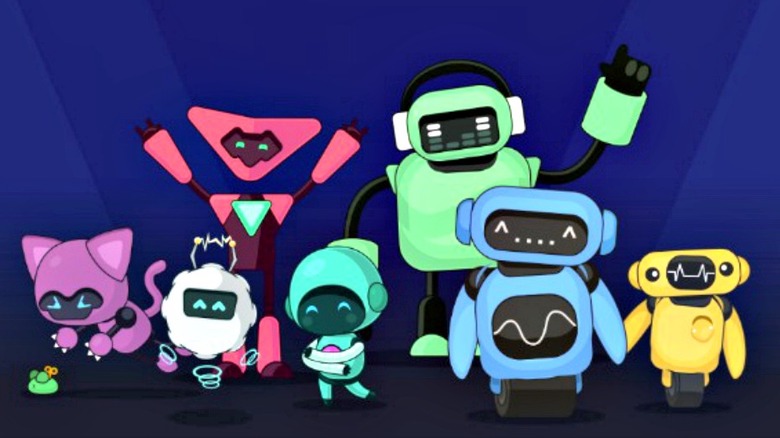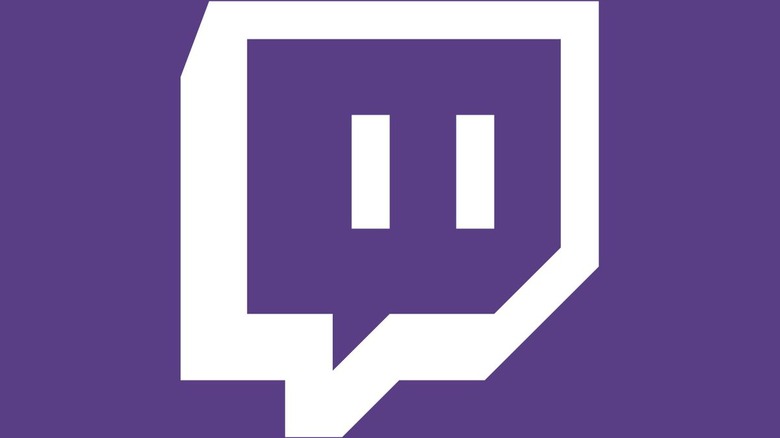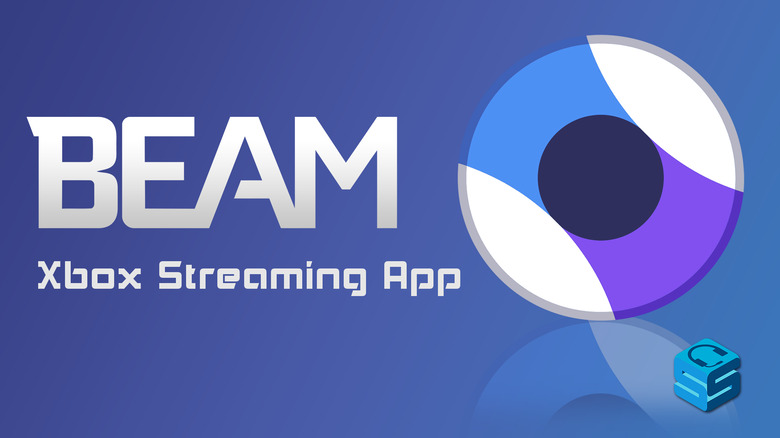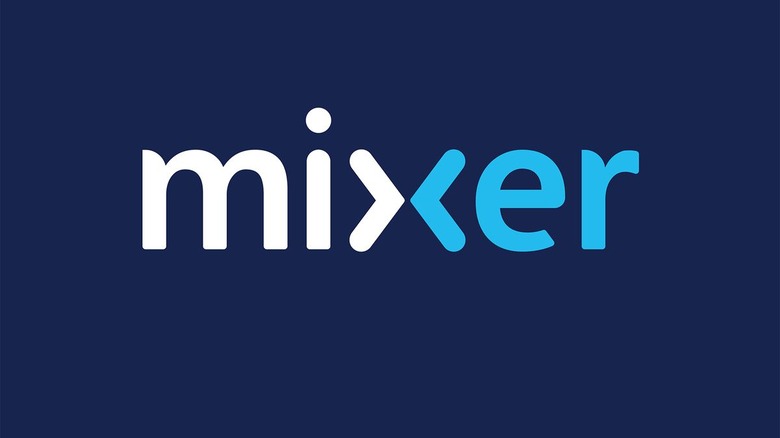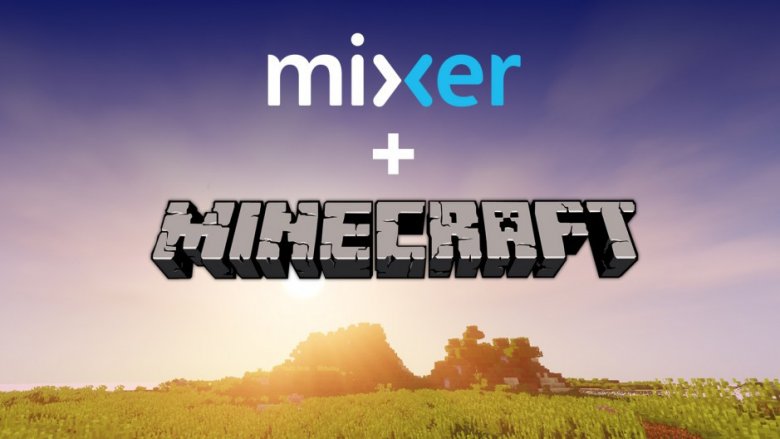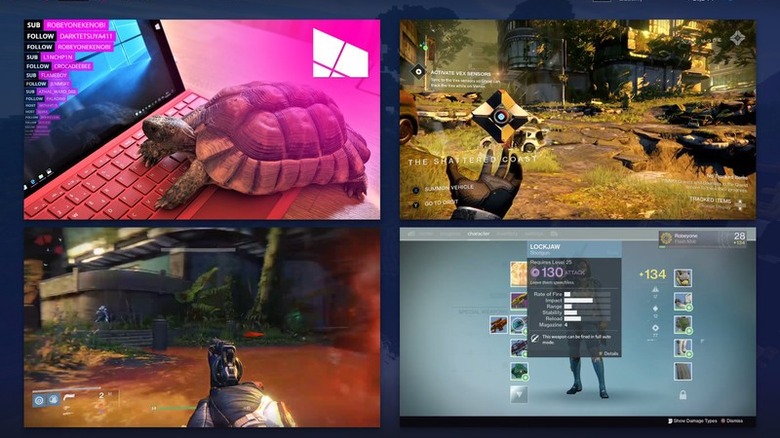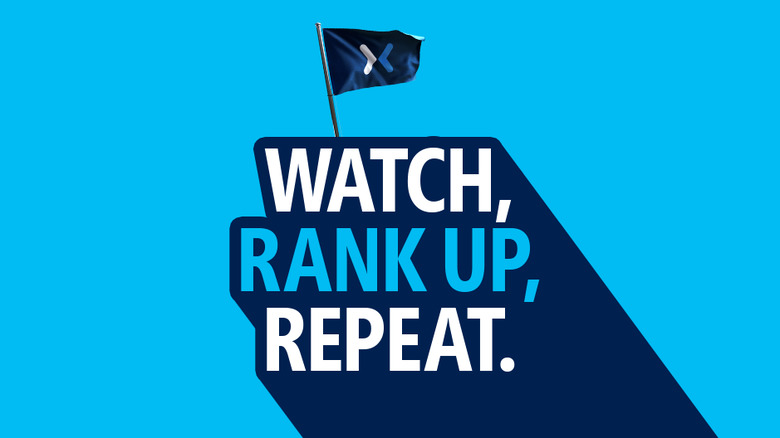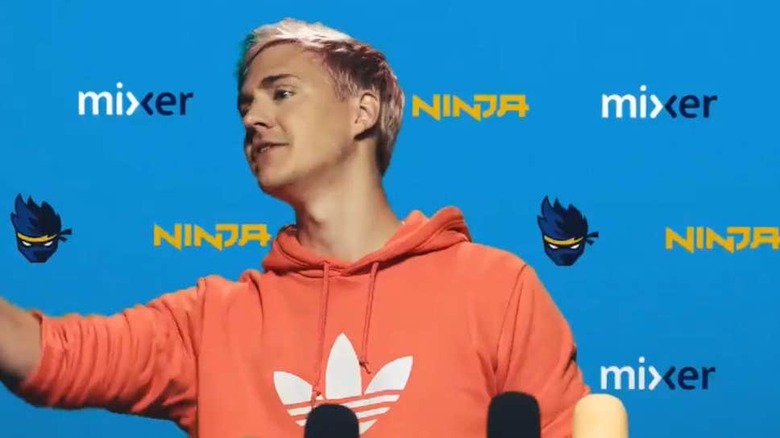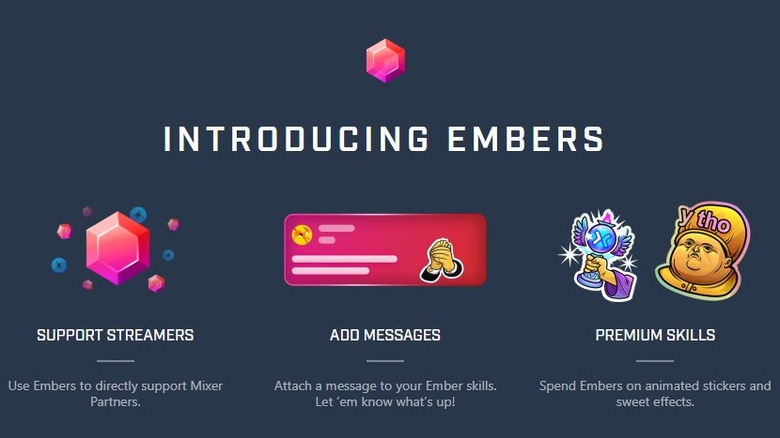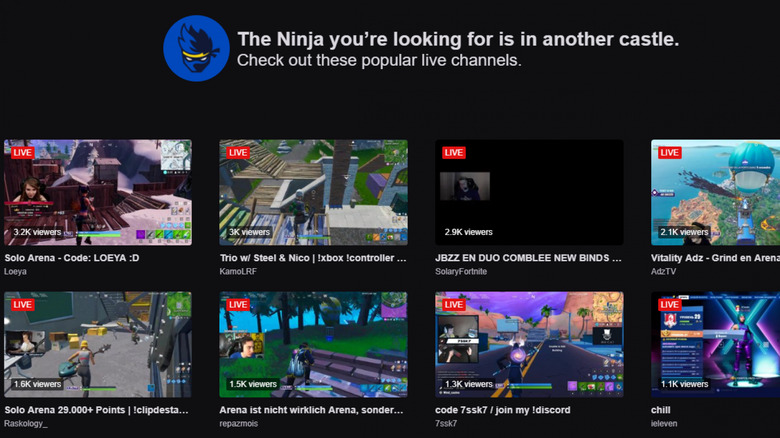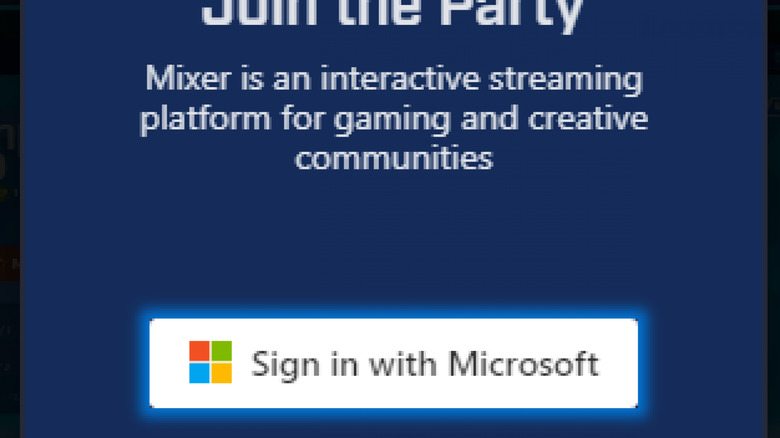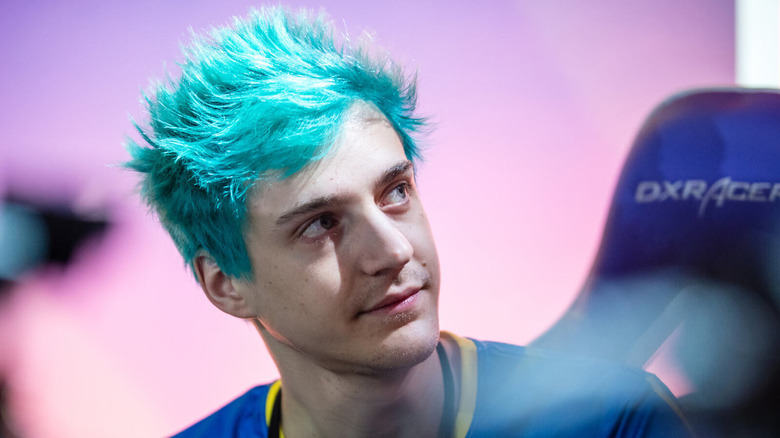The Difference Between Twitch And Mixer Explained
Update: Mixer shut down on July 22, 2020. Microsoft now has a partnership with Facebook Gaming.
Ninja is a kind of a big deal. Even outside of the world of Fortnite, he's made a name for himself as the world's most profitable streamer. Through subscriptions, donations, and ad revenue, he has amassed a fortune built on the back of Twitch and his hundreds of thousands of followers. That's why it was such a surprise when Ninja announced that he was abandoning Twitch in favor of Microsoft's streaming platform, Mixer.
For many, this was the first time that they had even heard of Mixer. It has a modest community of streamers in a user interface that feels like Twitch — just switch out all the purple for blue. Other than the color scheme, what does Mixer have that Twitch doesn't? Why would Ninja choose to make the move to Mixer? How will his streams be different on this new platform? Does this mean that Mixer is better than Twitch? Fans have a bunch of questions following Ninja's big announcement, and we're here to clear up the subtle differences between Twitch and Mixer.
Twitch is bigger and older
If you've been in the gaming community for a hot second, then it's likely you've heard of Twitch. The streaming platform boasts a stunning 1.76 million active streamers, including some of the biggest names in streaming, even without Ninja's presence. Folks like DrDisrespect, Pokemane, and Asmongold command massive audiences of viewers on the daily. These people have made streaming into a full time job, which allows them to pull in revenue from subscriptions, ads, and generous donations from their ardent fans.
Twitch had humble beginnings in 2011 before establishing itself as the platform for video game streaming, from esports to let's plays. Twitch started as a mere spinoff of Justin.tv which had a more general focus. As Twitch's popularity eclipsed that of Justin.tv's, the company diverted all of its resources into Twitch. This paid off, to the tune of $970 million, when Amazon acquired Twitch in 2014. Ever since, Twitch has essentially been the center stage for all things livestreaming, from intense speedrunning championships to chill, eight-day streams of Bob Ross.
Mixer is newer and gaining attention
Compared to Twitch, Mixer is new to the livestreaming scene. Mixer started in 2016 as Beam, but was quickly renamed Mixer in early 2017. Winner of the 2016 Startup Battlefield at the TechCrunch Disrupt conference, Microsoft acquired Beam and integrated it with Xbox One and Windows 10 software. The name change came about because Beam couldn't be used globally, and Microsoft wanted it's streaming platform everywhere in the world. Thus, Mixer came to be known as Microsoft's in-house answer to Twitch.
Matt Salsamendi, co-founder and engineering lead at Mixer, said that the name change was a tough decision. "But, it was something that we decided on as a team. We believe so much in the power of the platform and want to grow it in every major market around the world. Unfortunately, that wasn't something we could do with the Beam name."
Livestreaming isn't exactly a novel concept. So why did Microsoft jump on the chance to acquire Mixer, nee Beam, while Twitch continues to dominate the livestreaming niche? Mixer is differentiating itself from the giants of streaming by being faster and more social, as it turns out.
Fast than light (and faster than Twitch)
Mixer might be small, but it has proven itself to be mighty when it comes to staying low latency. This means that while platforms like Twitch and YouTube Gaming have a 10-20 second delay in what's happening on screen and what's happening in real life, the Mixer audience gets to see what their favorite streamer is doing in near-real time: just a second of delay. This has been aptly dubbed the Faster Than Light Protocol.
According to Mixer, "FTL enables streamers to interact with their viewers in real time, it's specifically tailored towards streams that engage viewers with interactive controls." This very low latency that Mixer emphasizes doesn't always work perfectly, and the blog warns that FTL is very sensitive to the veracity of the user's connection. But if everything is working as it is supposed to, then streamers can expect viewers to be able to see every killshot, every victory royale, every jumpscare the exact moment it happens.
Mixer mixes it up for interactivity
With what Mixer calls "sub-second delay," viewers can see exactly what their favorite streamer is doing as it happens, real time; forget that ten second delay that plagues Twitch. But why has Mixer invested so much effort into low latency streaming? Mixer has differentiated itself from Twitch by boasting a whole host of interactivity options. Twitch might have TwitchChat and donation messages, but Mixer allows for the audience to play minigames of their own, make wagers and win (or lose) in-game currency, or even hold beach ball-bumping rallies.
Mixer is all about interactivity. They want the audience to be an integral part of the stream. Streamers themselves have a considerable amount of freedom when it comes to devising exactly how they want their viewers to play along, e.g., creating customized polls. Mixer's approach to audience engagement feels a lot like an in-person concert or event, with viewers able to hold up signs (stickers) to show their appreciation, set off fireworks in the chat, and take part in collaborative efforts to bounce a beach ball around the screen.
Co-streaming vs Squad Streaming
Mixer is faster than Twitch, not only with its Faster Than Light streaming protocol, but also in allowing streamers to team up and host each other at the same time. In 2017, Mixer launched the co-streaming feature, allowing for up to four players to broadcast collaboratively in a single place. Rather than pulling up four separate Apex Legends streams, viewers can tune into a single channel to see what the whole squad is up to, real time.
Twitch made their own version of co-streaming called Squad Streaming, launched in March 2019. The feature isn't yet available to everyone, the kinks currently being worked out by Twitch Partners. Unlike Mixer's co-streaming, one stream gets the honor of being in the "primary" spot, while the others line the bottoms of the screen. Mixer's co-streaming feels a lot like playing Mario Kart on a single TV with four players. Both platforms' features have been called hard to handle, as it is difficult to sync up streams, but the potential is there for a solid experience that harkens back to the olden days of collaborative, in-person play.
Twitch has Twitch problems
Twitch gets more attention than Mixer by far, but sometimes it's for the worst of reasons. Twitch has an issue with toxic streamers. Some of the most popular faces on the platform have found themselves in the news over various scandals. Even Ninja is no stranger to controversy, having found himself in hot water after saying that he would never stream with women.
That little hiccup is nothing compared to some of the upsets that bring the good name of Twitch into the headlines. On Twitch, streamers have been caught abusing their partners, going on sexist and racist rants, and even brutalizing their pets. Twitch IRL streams have gained infamy for their disruptive, disrespectful nature as the streamers cause a little chaos for the sake of views. Repeat offenders, like DrDisrespect, who recently returned from a temporary ban after livestreaming a trip to a public restroom, still enjoy fame and notoriety on the platform. DrDisrespect has said that he would switch to Mixer if it made him more money than Twitch. This switch would make him the most controversial figure on Mixer, considering that nary a peep of scandal has come out of the relatively fresh and clean platform yet.
Leveling up on Mixer
Even if you're just watching someone stream a game on Mixer, you can still play. Mixer has fully embraced the concept of gamifying the role of the audience member. The Channel Progression feature is essentially a reward system for viewers. Want some in-app currency? All you have to do is watch a stream, which is probably what you're doing anyway. Viewers can further "level up" and gain experience points by staying loyal to their favorite streamers, throwing their opinion into the stream's chat, and using Skills. Skills are special abilities that are progressively unlocked, like throwing up stickers or special effects onto the screen.
As viewers rank up by participating in streams, they earn badges and icons that identify them as a diehard fan. This is done through building up experience points, you know, like in a video game. Newbies will find themselves on level one whereas the most epic of fans might one day reach the rank of level 99. This gamification aspect is meant to inspire loyalty to streams and encourage viewers to interact — interactivity is what Mixer has again and again emphasized as their north star.
Twitch offers a lot of paths to cash
Livestreaming yourself has become a surprisingly lucrative career. It helps to have an infectious personality or a unique gimmick, of course, but once a streamer has gained fame, fortune is almost guaranteed. On Twitch, there are many different ways that streamers can find themselves making the big bucks.
To start with, for every subscription, streamers earn an average of around $2.50 per month. This can add up if they're an up and coming streamer, gaining hundreds of subscribers. Viewers can also generously donate to the streamer, whether that's in straight cash monies or Twitch Bits. Ad revenue is yet another way that streamers can make some serious cash; Ninja's ad revenue easily outpaced his earnings from subscribers.
This is one reason why it is so surprising that he switched to Mixer: Mixer does not support third-party ads. Those ads that Ninja used to run for T-mobile? Uber Eats? That money is gone. Ninja of course was likely given a considerable nest egg to convince him to switch to Mixer, but the same can't be said for the average streamer. Twitch might be the better place for streamers to make money at the moment.
Mixer makes it hard to find older content
One of the initial complaints of the newest name in livestreaming is the fact that Mixer doesn't seem too keen on keeping past streams around. Past streams become VoDs, "videos on demand," which allow for viewers to go back and watch whatever they missed. Mixer may be embracing the effervescent, impermanent nature of streaming more than Twitch: for Regular and Pro users, VoDs only stick around for a fortnight.
This isn't unheard of. For Twitch, 14-day storage is the standard for regular broadcasters. Twitch Prime users and Partners have the benefit of a 60-day save of old VoDs. Mixer offers a whooping 90-day storage of VoDs, but has saved this feature only for Partners. The paths to partnership on both platforms are fairly similar, but Twitch Partnership boasts that ad revenue benefit that can prove very tantalizing for those in it for the money.
Twitch is hugely diverse
Twitch has had the benefit of being the big name in streaming for several years. This has allowed the platform to grow and, interestingly, come to resemble the diverse platform that the folks at Justin.tv first imagined that they'd create. Twitch is now about so much more than just video games. The platform has shapeshifted to accommodate all manner of streamers, adding in categories like Just Chatting, Makers & Crafting, and Talk Shows & Podcasts. Video gaming of course enjoys the most viewers, but there are plenty of streamers who never so much as touch a controller or keyboard who host hundreds of viewers every night.
Mixer also supports alternative streamers working on Blender projects or practicing piano, but these are few and far between. The lion's share of the streams are focused on gaming, and finding the Creative or Web Show categories is a little difficult when they're nested under the "Games" tab. Mixer is still growing, of course, but at the moment Twitch seems like a more comfortable home for crafters and cosplayers.
Bits vs Sparks vs Embers
Just when you think you have Twitch Bits figured out, Mixer gets fancy and mixes things up with two new in-app currencies. There's more options than ever to give to a favorite streamer. Do they cheer Bits? Send Sparks? Embers? What are all these delightfully named digital dollars?
Twitch Bits function as fun money, making donations have a little bit more flair. 100 bits can be purchase for the IRL sum of $1.40, and are designated as separate from straight cash donations. Mixer's version of Bits are called Embers, with 55 currently available for $0.99, which can be used to donate to the streamer or buy stickers and other "Skills" in order to command attention in the chat. Sparks also allow viewers and streamers alike to purchase various Skills, but cannot be donated to streamers. Sparks are earned through watching streams and interacting in chat, the same way that Mixer's Channel Progression encourages interactivity by awarding viewers experience points for loyalty and speaking up in chat.
Basically: Bits and Embers are money. Sparks are Mixer money to unlock fun Mixer effects like enabling interactive games.
Mixer is measly
Mixer has built itself up to be the next big thing in streaming. Maybe Ninja is the first step to that eventual goal, but Mixer has a long, long way to go before it dwarfs the powerhouse that is Twitch. Twitch has had the benefit of a head start; its community is huge.
The Mixer community? Not so much. While Twitch has at least a half dozen streams with tens of thousands of viewers going at any one time, Mixer has ... Ninja. At one time he had 80,000 people rooting for him. On an average day, however, he has around 20,000 viewers. This is nothing to sneeze at, of course, but it makes him something of an anomaly compared to the rest of Mixer. The second most viewed channel behind him hosts music streaming, and other gaming streamers pull in triple digits on average. Mixer is growing, especially now following the addition of Ninja, but the community isn't nearly as vast and diverse as Twitch's.
Mixer is Microsoft-oriented
Microsoft acquired Mixer for an as-yet undisclosed amount of money. (We're going to guess it was a tidy amount of cash.) Mixer is in Seattle, right alongside Microsoft's base of operations. Microsoft integrated Mixer right into its own platforms for gaming: Xbox One and Windows 10.
Twitch requires prospective streamers to use a third party software like the always popular OBS in order to stream, from PC or console. Mixer has streamlined the process for Microsoft devices. Streaming to Mixer is just a few keystrokes away once users are logged in with their Microsoft accounts, offering a fairly quick and user friendly way to start up a stream. On Xbox One, all players have to do is hit the broadcast button, nested under the Xbox button, after making sure that their Mixer account is signed in and linked to their Microsoft account. Mixer wanted to make sure that streamers could start streaming at the speed of light to their Faster Than Light platform.
Twitch is demanding
One of the biggest talking points following Ninja's departure from Twitch is the demanding nature of streaming. Ninja, and fulltime streamers like him, have arduous schedules that allow for very little time off. Sure, they're "just playing video games," but they're also serving as hosts to hundreds of people for hours on end. That can get exhausting, especially when they're forced to endure twelve hour days. Due to the competitive nature of Twitch, Ninja felt unable to take time off. Every time he did, even for a day or two, he saw hundreds of subscribers abandon him.
Mixer offers streamers tired of vying for attention a fresh start. It is easy on Twitch to get lost in the crowd, but Mixer is still a small community, not yet oversaturated by thousands of streamers trying to be the next Ninja. Ninja himself admitted to seeing his switch to Mixer as a return to the "good old days" of streaming, when he wasn't a crazy popular superstar Fortnite player.
Ninja's presence on Mixer has been a direct boost to smaller channels. Ninja has hosted several, rocketing people like SoloQ Jokerr and PHATTPANTZ to popularity, giving them thousands of new subscribers.

